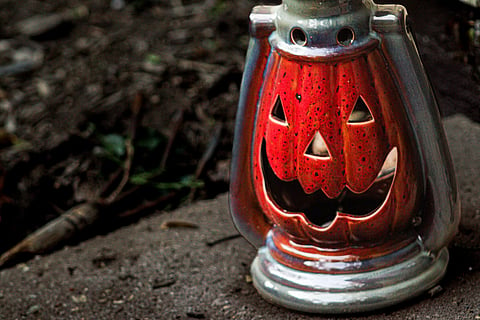

Before Halloween became a parade of plastic pumpkins and candy wrappers, it was a night steeped in fear, fire, and superstition. Across centuries and continents, people believed that the dead could walk, spirits could steal souls, and fortunes could be sealed in a slice of bread. Here are ten spine-tingling Halloween traditions that prove history can be far scarier than fiction.
Lanterns carved from turnips
Long before pumpkins became the face of Halloween, people in Ireland and Scotland hollowed out turnips and carved grim faces into them. These lanterns, often called “Jack o’ lanterns,” were meant to scare away wandering spirits or light the way for lost souls.
Souling for cakes
In medieval England, children and the poor went from house to house offering prayers for the dead in exchange for “soul cakes.” It was a solemn forerunner to modern trick-or-treating — except the reward wasn’t candy but small round cakes baked in memory of departed loved ones.
The night when worlds overlap
The ancient Celts believed that on October 31, the veil separating the living from the dead grew thin. Spirits could cross over, leading people to disguise themselves in animal skins or wear masks to confuse ghosts looking for souls to take.
Midnight cemetery visits
In many parts of Europe and Latin America, families still spend Halloween night in cemeteries. They light candles, decorate graves with flowers, and even share food and music, believing their ancestors return home for a short visit.
Hop-tu-Naa and the door-battering threat
On the Isle of Man, children celebrate an ancient festival called Hop-tu-Naa by carrying carved turnip lanterns while singing traditional songs. In older times, those who refused to give treats risked a round of “door-battering” — quite literally knocking on doors until the residents gave in.
Mischief Night madness
In parts of the UK, Canada, and the US, the night before Halloween is “Mischief Night,” when pranks run wild. Homes might get toilet-papered, doorbells rung endlessly, or windows soaped. It’s the chaotic cousin of Halloween that often blurs the line between fun and fright.
Barmbrack and edible fortune-telling
In Ireland, Halloween isn’t complete without a slice of barmbrack — a sweet bread baked with hidden tokens. A ring means marriage, a pea signals a life alone, and a rag foretells financial trouble. It’s part dessert, part prophecy, and all kinds of spooky.
Ghostly costume parades in Japan
In Tokyo’s Shibuya district, thousands gather for an all-night Halloween parade with costumes ranging from pop culture icons to grotesque horror figures. The event is equal parts creative and creepy, showing how Halloween’s eerie energy has gone global.
Bonfires to scare off evil
The Celts marked Samhain — the origin of Halloween — with huge bonfires that symbolised light triumphing over darkness. They believed the flames would protect their communities from evil spirits lurking in the cold, dark months ahead.
Trick-or-treating’s dark beginnings
Modern trick-or-treating evolved from older practices like “guising” and “souling,” when people went door to door in disguise, asking for offerings. Those who refused could expect mischief or minor curses — a chilling reminder that “trick or treat” once meant exactly what it said.
From sacred bonfires to edible omens, Halloween has always been more than candy and costumes — it’s humanity’s playful way of facing the dark, one eerie custom at a time.